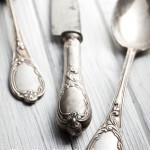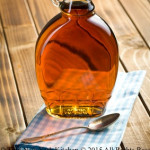Now that the colder weather is here and you’ve put away your beach towel it’s time to winterize your cocktails. One way to achieve this is by using amari, the rich, bitter, herbal European-style liqueurs-before–dinner aperitifs and after-dinner digestifs-that have become more popular and widely available. Amari can add structure and backbone to cocktails and is often the secret behind some of the most iconic classic drinks. Amaro is perfect for colder months, to pair with flavors like honey, citrus, and spices. Adding it is like seasoning food because it enhances flavors and gives the drink more character.
This season bartenders are combining them with brown spirits like dark rum, bourbon, rye, and Scotch for autumn and winter drinks. You could make a variation on the Brooklyn cocktail with bourbon, amaro, maraschino liqueur, dry vermouth, blood orange liqueur, and bitters.
Some add amaro and bourbon to mulled wine or change up that Irish Coffee by using single-malt whiskey, two kinds of amaro, coffee, simple syrup, and topped with whipped cream. Change up the Negroni by keeping the gin, but replacing the Campari with amari and adding amontillado sherry.
Be inventive and try adding amari to your holiday cocktails. You may just create a new classic.
“Work With What You Got!”
©Tiny New York Kitchen © 2018 All Rights Reserved
I Love To Sit Outside On A Crisp Autumn Morning
The average life expectancy for men was 47 years old.
Americans spent 1/3 of their income on food.
Children remained under their parents’ roofs until they were married.
Fuel for cars was only sold in drug stores.
Only 14 percent of the homes had a bathtub.
Only 8 percent of the homes had a telephone.
Ten percent of infants died in their first year.
The maximum speed limit in most cities was 10 mph.
Men wore blue serge suits at work.
The tallest structure in the world was not in the U.S., but was France’s Eiffel Tower.
The average U.S. wage in 1910 was 22 cents per hour.
The average U.S. worker made between $200 and $400 per year.
A competent accountant could expect to earn $2,000 per year.
A dentist could make $2,500 per year.
A veterinarian could make between $1,500 and $4,000 per year.
A mechanical engineer could make about $5,000 per year.
More than 95 percent of all doctors had no college education. Instead, they attended so-called medical schools, many of which were condemned in the press and the government as “substandard.”
Sugar cost 4 cents per pound.
Eggs were 14 cents per dozen.
Coffee was 15 cents per pound.
Most women only washed their hair once a month. They used Borax or egg yolks for shampoo.
Canada passed a law that prohibited poor people from entering into their country for any reason.
The five leading causes of death were: Pneumonia and Influenza, Tuberculosis, Diarrhea, Heart Disease, and Stroke.
The American flag had 45 stars.
The population in Law Vegas, Nevada was only 30.
Crossword puzzles, canned beer and iced tea hadn’t been invented yet.
There was neither a Mother’s Day nor a Father’s Day.
Two out of every 10 adults could not read or write.
Only 6 percent of all Americans had graduated from high school.
Marijuana, heroin and morphine were all available over the counter at local drug stores. Back then pharmacists said, “Heroin clears the complexion, gives buoyancy to the mind, regulates the stomach, bowels, and is, in fact, a guardian of health.”
18 percent of households had at least one full-time servant or domestic help.
There were about 230 reported murders in the ENTIRE United States.
It’s amazing how fast everything has changed and it’s impossible to imagine what it will be like in another 100 years!
“Work With What You Got!”
© Victoria Hart Glavin Tiny New York Kitchen © 2017 All Rights Reserved
As My Czech Grandmother Used To Say, “I Drink The Coffee Then I Do The Things.”
“Work With What You Got!”
© Victoria Hart Glavin Tiny New York Kitchen © 2016 All Rights Reserved
For those of you who prefer an electric model ice cream machine, there are machines that can be had for under $50 that make a quart. The drum will need to be frozen before starting a batch. Larger machines range from $125 to $300. Cuisinart makes a model that produces two quarts in about 30 minutes, which is the ice cream maker that I used in this video.
Stores such as Williams-Sonoma sell ice cream starters that require a few simple added ingredients put into the machine to create ice cream. Personally, I don’t think that you need these starters.
There are endless combinations of ingredients that can be added to a batch of your homemade ice cream. Have fun experimenting with different flavors and add-ins. Enjoy summer with homemade ice cream that fits your personality.
“Work With What You Got!”
© Victoria Hart Glavin Tiny New York Kitchen © 2015 All Rights Reserved
 Constitution Week – Foods of Our Forefathers Part III
Constitution Week – Foods of Our Forefathers Part III
The abundance of meat in America was a major change in the diet of the early settlers. Rabbits and squirrels were available year-round nearly everywhere, plus deer and other large game in many regions. As settlers moved west, buffalo gained importance in the diet. Fish, shellfish and wild fowl became common food, and they were all essentially “free.” The existence of these various forms of game was a literal life saver in times of uncertain crops and unbroken land. The game gradually diminished, of course, as the population expanded and settlers pushed west, but it provided a large share of the diet in early and frontier days.
Ham, of course, appeared on almost every settler’s table, rich or poor. It might be the only meat served at a meal or it might appear in company with more exotic roasts and fowl, but it was always there – breakfast, dinner and supper.
Corn was also a staple of the colonists, either fresh in summer, or as hominy or corn meal all year. Corn was also put to another use by an early Virginian, Captain George Thorpe, who may have been the first food technologist in America as he invented Bourbon whiskey shortly before he was massacred by the Indians in 1622.
Meal patterns for working people in rural early America were very different from those common today. Breakfast was usually early and light which consisted of bread, hominy grits, and sometimes fruit in season. Coffee, which was a new beverage at the time, was popular that is if it was available. A drink made from caramelized grain was sometimes substituted. Chicory was popular in the South, either alone or used to stretch the coffee. Tea was often made from local leaves such as sage, raspberry or dittany. Alcohol in some form was often served.
Breakfast in more elegant homes or large plantations might be later in the morning, and include thinly sliced roast and ham.
Dinner was served somewhere between midday and midafternoon, depending on the family’s circumstances, and was the big meal of the day. There was almost always ham, as well as greens (called sallat), cabbage and other vegetables. In the proper season, special dainties would appear – fresh fruits and berries, or fresh meat at appropriate butchering times.
Desserts could be simple such as a scooped out pumpkin, baked until done and then filled with milk, to be eaten right out of the shell. Or dessert could be more complex such as ice cream or other fruit flavored frozen pudding or a blanc mange. Blanc mange was prepared from milk and loaf sugar, flavored with a tablespoon or two of rosewater, thickened with a solution of isinglass (derived from fish bladder, soaked overnight in boiling water). This mixture was boiled for 15 to 20 minutes, then poured into molds to set.
If isinglass was not available (most was imported from England), homemade calves foot jelly could be substituted, but eh dessert was not as fine.
Various alcoholic beverages, including wines, applejack, “perry” (hard cider made from pears), or beer were commonly consumed.
In winter, peaches and other fruit disappeared from the dinner table, to be replaced by dishes made from stored apples and dried fruit of various sorts. Soups or broths also took their place. Milk grew scarce as cows “dried up” in the short days. Vegetables gradually decreased in variety as stored crops wilted.
Apples quickly became a staple in early America. Orchards were easy to start, required a minimum of care, and apples stored well. Housewives devised a multitude of “receipts,” including sauces and butters for off-season, as well as many using dried apples.
Supper was late and a light bread and butter, some of the left-over roast from dinner, fruit (fresh if in season, pickled and spiced otherwise), and coffee or tea.
To Be Continued…
Labor Day Weekend is the perfect weekend for a picnic. To celebrate the end of summer I’ve organized a feast of some of America’s favorites – from fried chicken to chocolate cake, cheeseburgers to homemade strawberry ice cream.
Parsley Potato Salad
Mushroom Artichoke Salad
Chile-Spiced Bean Salad
Crusty Parmesan Chicken Breasts
Deviled Eggs
Pickled Beets
Barbecued Cheeseburgers
Tomatoes
Radishes
Lettuce
Red Onions
Pickles
Olives
Chocolate Buttercream Cake
Strawberry Ice Cream
Strawberries
Beer
Lemonade
Coffee
Packing the picnic: The salads can be prepared a day in advance. It’s probably not necessary to double the recipes unless you have a large crowd to feed. Be sure to include a serving spoon for each salad. The Crusty Parmesan Chicken Breasts can be served either cold or warm. Either bake it a day ahead, refrigerate it, and carry it in a cooler; or pop it in the oven about an hour before you leave and transport it hot. The deviled eggs can be made from your favorite recipes or one from Tiny New York Kitchen. They will need several hours to chill and must be packed in a cooler, along with the assortment of vegetables (each in a plastic container). Take along a basket or platter for the chicken, a tray for the eggs, and serving forks.
All of the barbecue equipment can travel in a sturdy cardboard box, if there’s room, lay the buns and cheese on top so they don’t get squished. The hamburgers and condiments should be packed in a cooler.
You can bake the cake and prepare the frosting well in advance; both can be stored in the freezer. After thawing, the frosting should be beaten for a few minutes with an electric mixer. A round plastic serving plate with a high, tight-fitting cover is ideal for transporting the cake; remember to carry along a knife and a cake server.
In a cooler, pack the ice cream custard, berry mixture, and ice, each in its own container. Take a hammer and large, heavy dishtowel for crushing the ice cubes, and rock salt for the ice cream freezer (which would be a non-electric one). Pack the fragile ice cream cones and berries for garnish last.
Keep the beer in the cooler. For the lemonade and coffee, you will need a couple of thermoses. Preheat the one for the coffee; don’t forget to take cream (kept cold) and sugar. Pre-chill the other thermos and fill it with cold lemonade.
At the site: Assemble the ice cream freezer and begin hand-cranking, taking turns so that everyone can participate. If the ice cream is ready before it’s time for dessert, remove the dasher, cover the container, and let it stay in the freezer to ripen; don’t forget to dump out the salty water and pack the freezer with fresh ice.
Fire up the barbecue about 30 minutes before you want to begin cooking. Grill the cheeseburgers when the coals are gray. Arrange the chicken in a basket, set out the rest of the food, and dig in.















